Fanout Routing
Fan-out or fan holes refer to drawing out a short section of wire from the chip pad and punching holes. The main purpose of doing this is to make necessary space for different networks to facilitate subsequent inner layer wiring operations. For small IC devices such as capacitors and resistors, rapid fan-out can be carried out by manual copy-paste. However, for packages with a large number of pins and a small pitch, such as BGA, manual fan-out requires a lot of time. JLCEDA pro provides an automatic fan-out wiring function for rapid batch fan-out of such packages.
Steps: Top Menu-Route-Fanout Routing
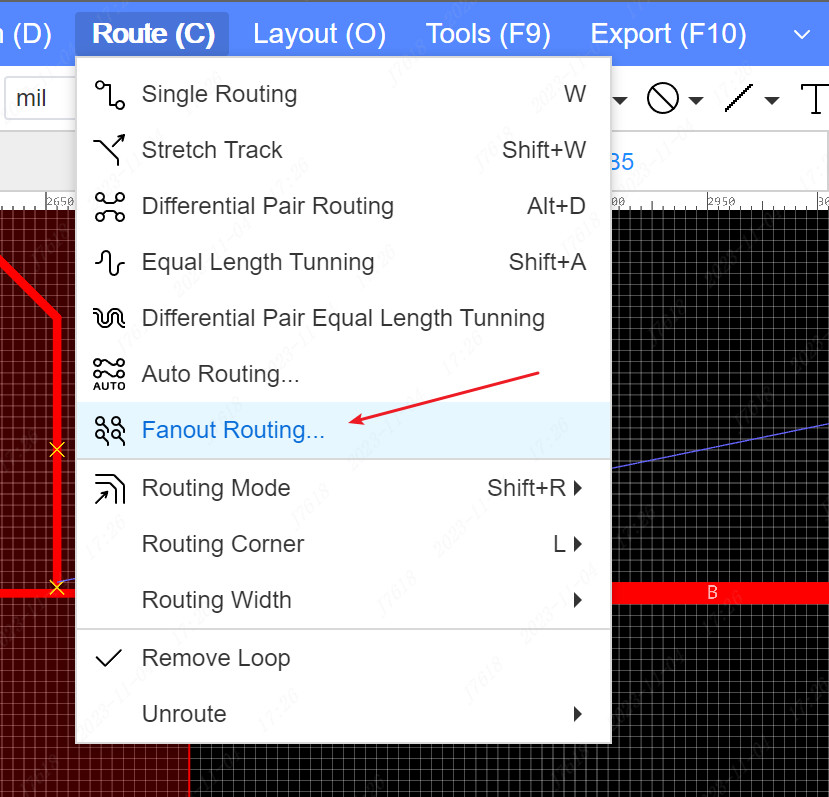
After clicking the menu, a fan settings dialog box appears.There are many fan settings in the dialog box, which is convenient for different types of packaging and requirements for fan.
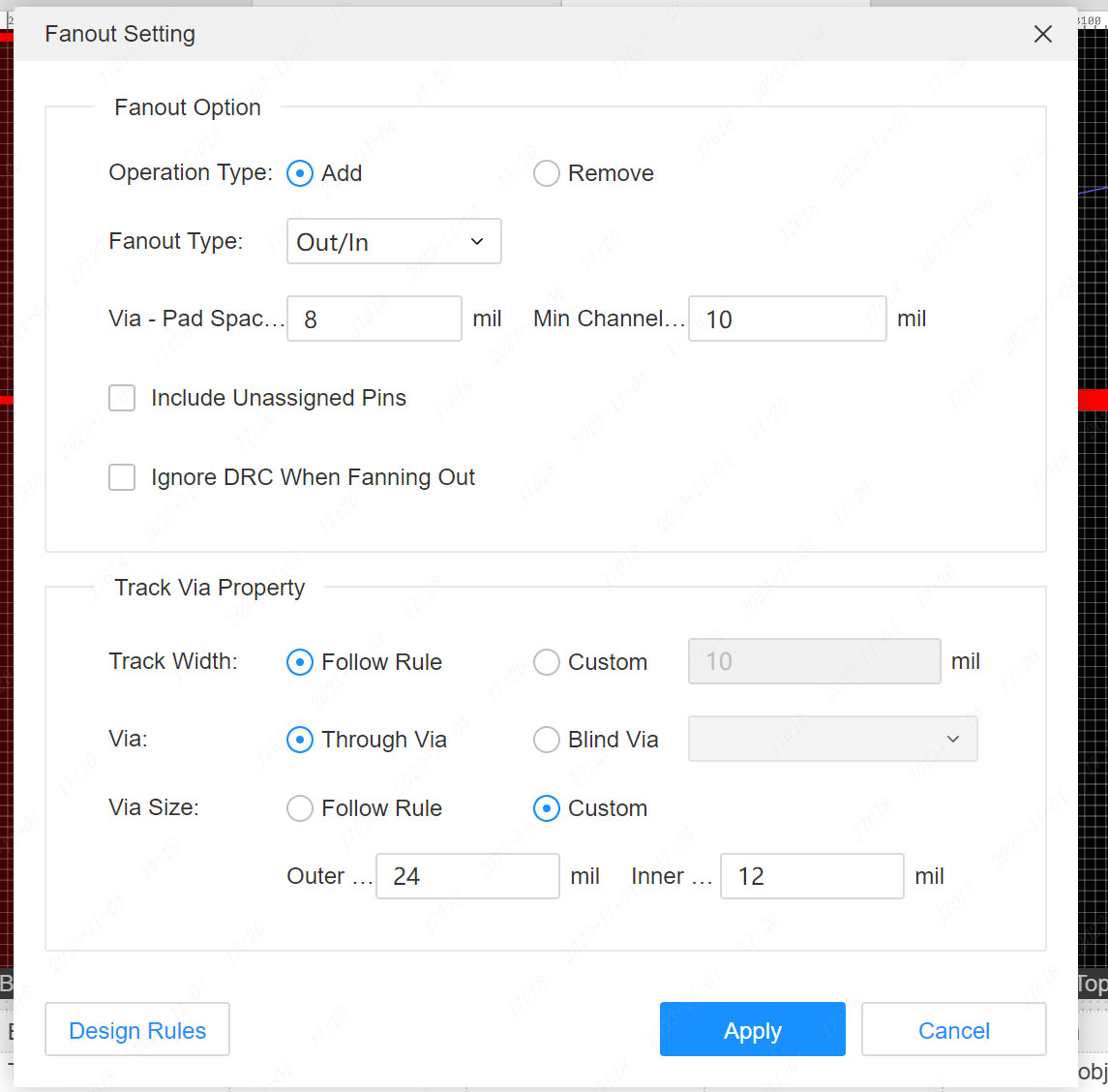
Steps: When the dialog box pops up, you can also drag and select the canvas.The fan can take effect on the components and pads. Before clicking on the application, you need to select the component or pile that needs to be made in the canvas, otherwise it will not be able to fan out.
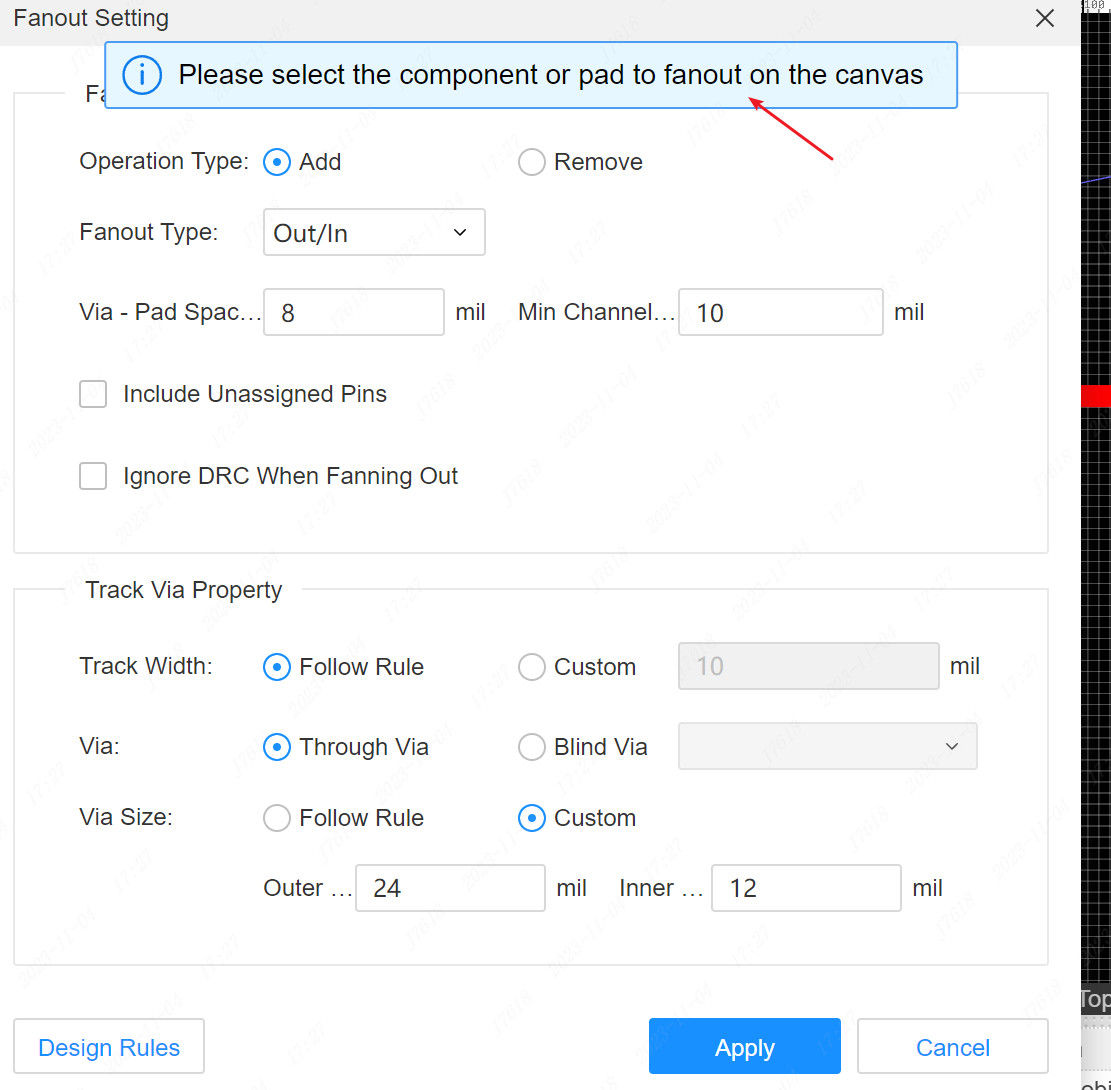
Fanout Option
Operation Type: Divided into new and removal.If the wires or pores are connected on a certain pad, the fan needs to be reopened, and the removal operation needs to be performed first.
Fanout Type: easyEDA pro version provides a rich fan type option.
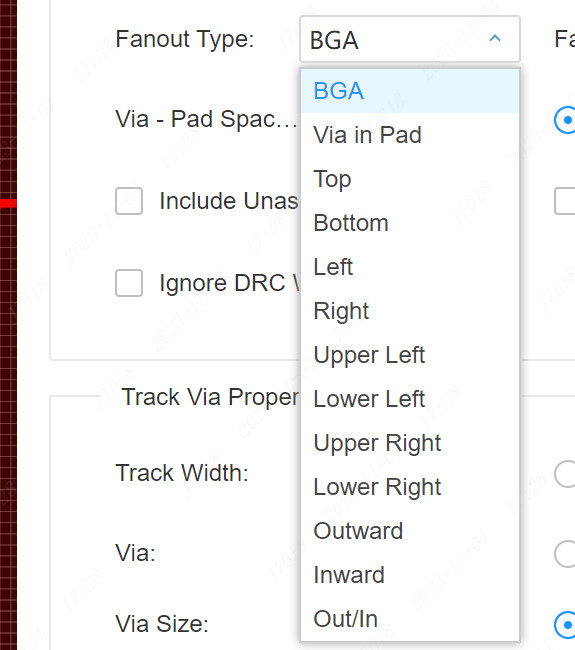
- **BGA**: This is the most commonly used fan, mainly for BGA packaging.Based on the BGA central line, the pads in the four regions in the upper left, lower left, upper right, and lower right are different directions.
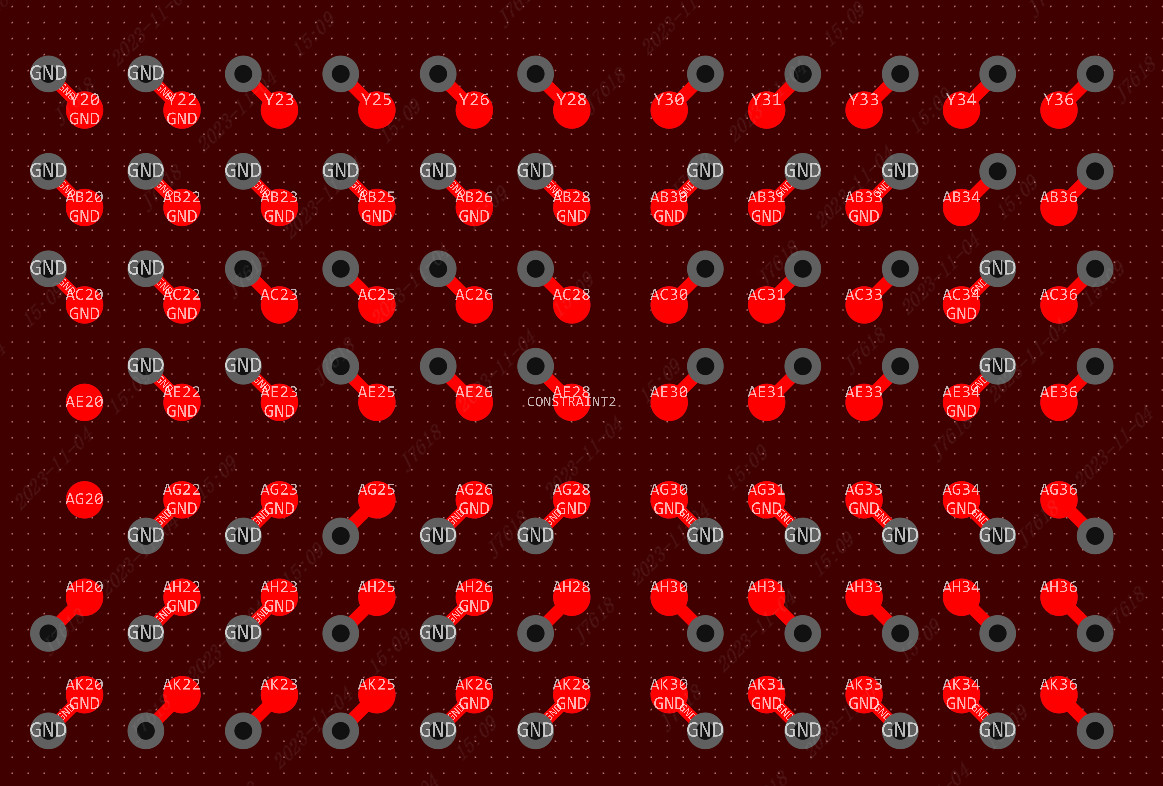
- **Via in Pad**: The hole in the disk is to play a perforated directly in the center of the pad, without adding a wire, the "resin plug hole+electroplating cap" provided by EasyEDA Pro can make the pads not see the holes at all, and the performance spike spikes."Covering oil" and "over -pore oil".
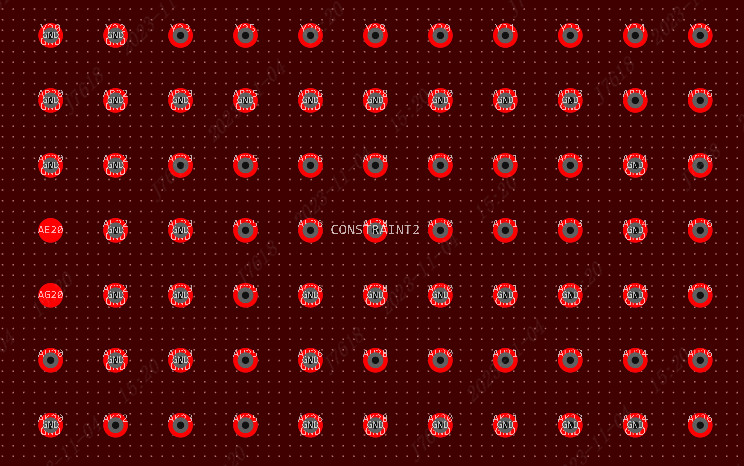
- **Top**: The direction of the fixing fan is up.
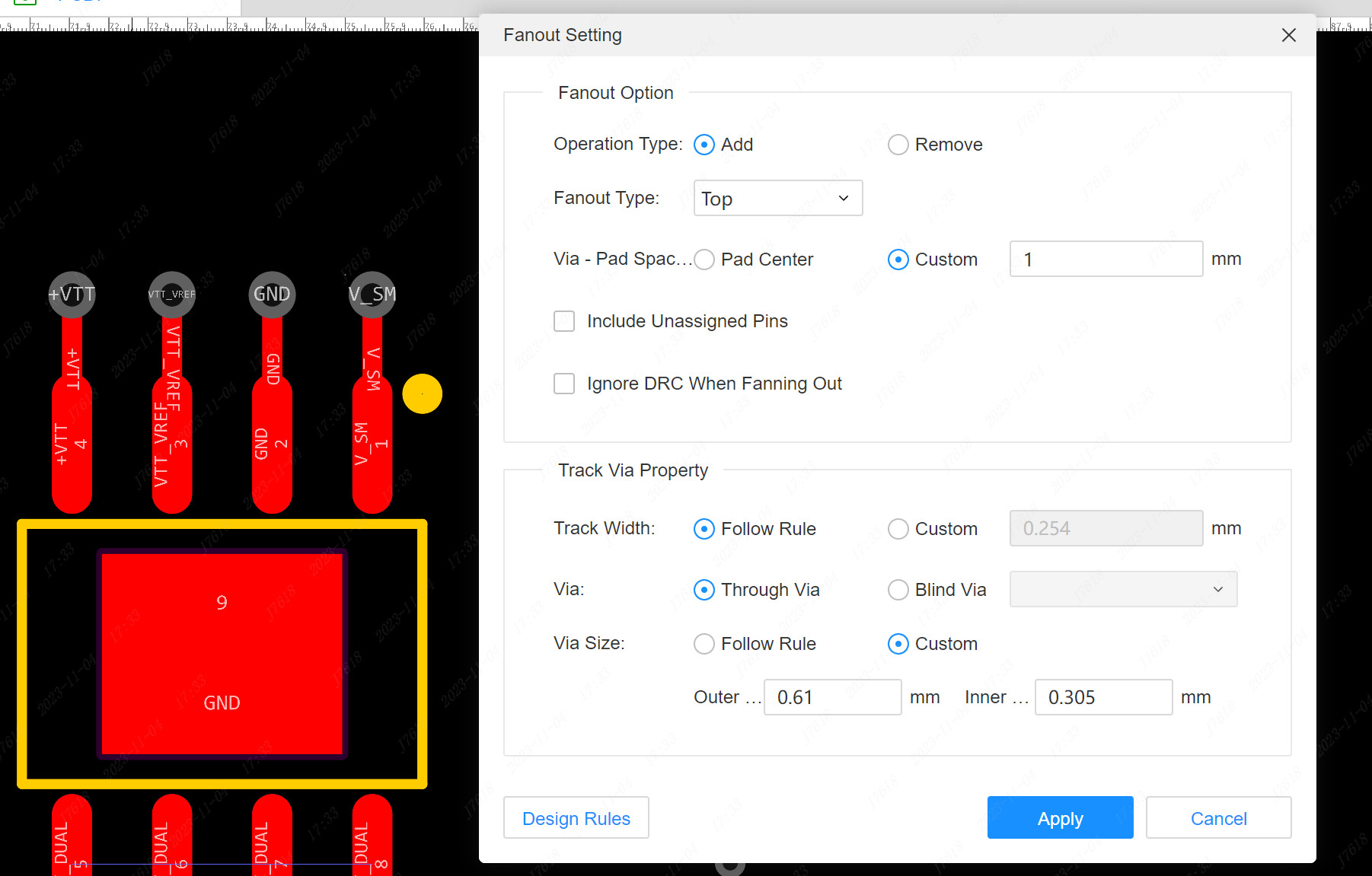
- **Bottom**: The direction of the fixing fan is down.
- **left**: The direction of the fixed fan is to the left.
- **right**: The direction of the fixed fan is to the right.
- **Upper left**: The direction of the fixed fan is upper left.
- **Lower left**: The direction of the fixed fan is the bottom left.
- **Upper right**: The direction of the fixing fan is upper right.
- **Lower right**: The direction of the fixing fan is the bottom right.
- **outward**: It is mainly aimed at the packaging of rectangular or bilateral pads in the three rules as shown below. For example, if LQFP, the direction of the pads will be automatically detected when it is fanned, and it will be fanned to the outside of its location.
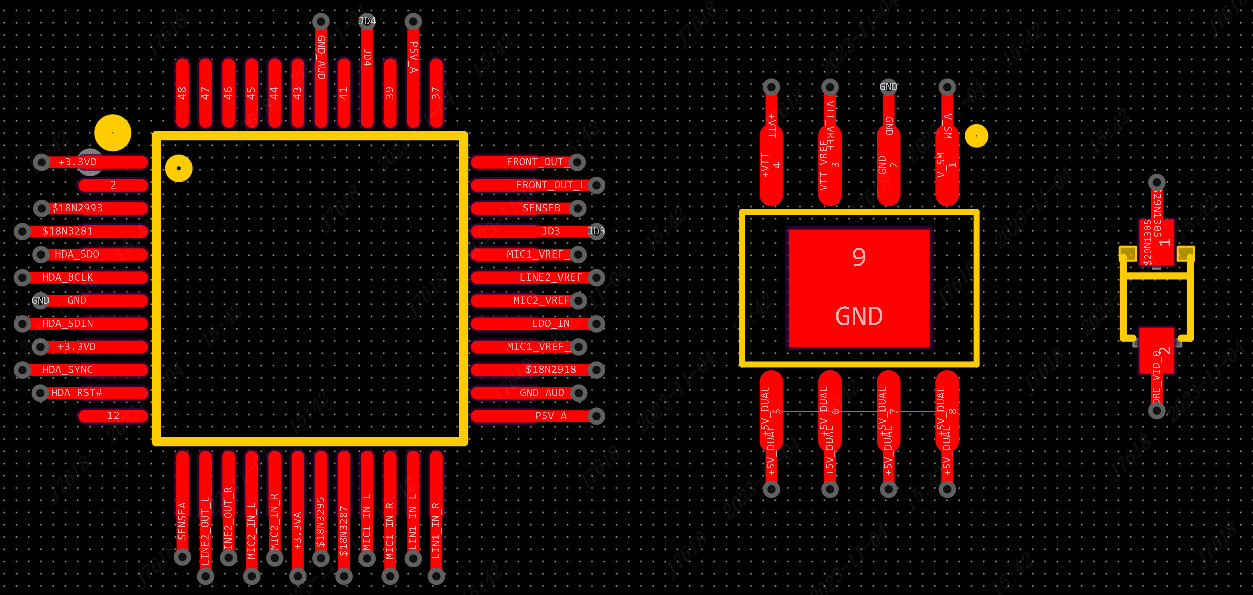
- **Inward**: Like the packaging of the outward type, the direction of its fan is inside the position where the pad is located.
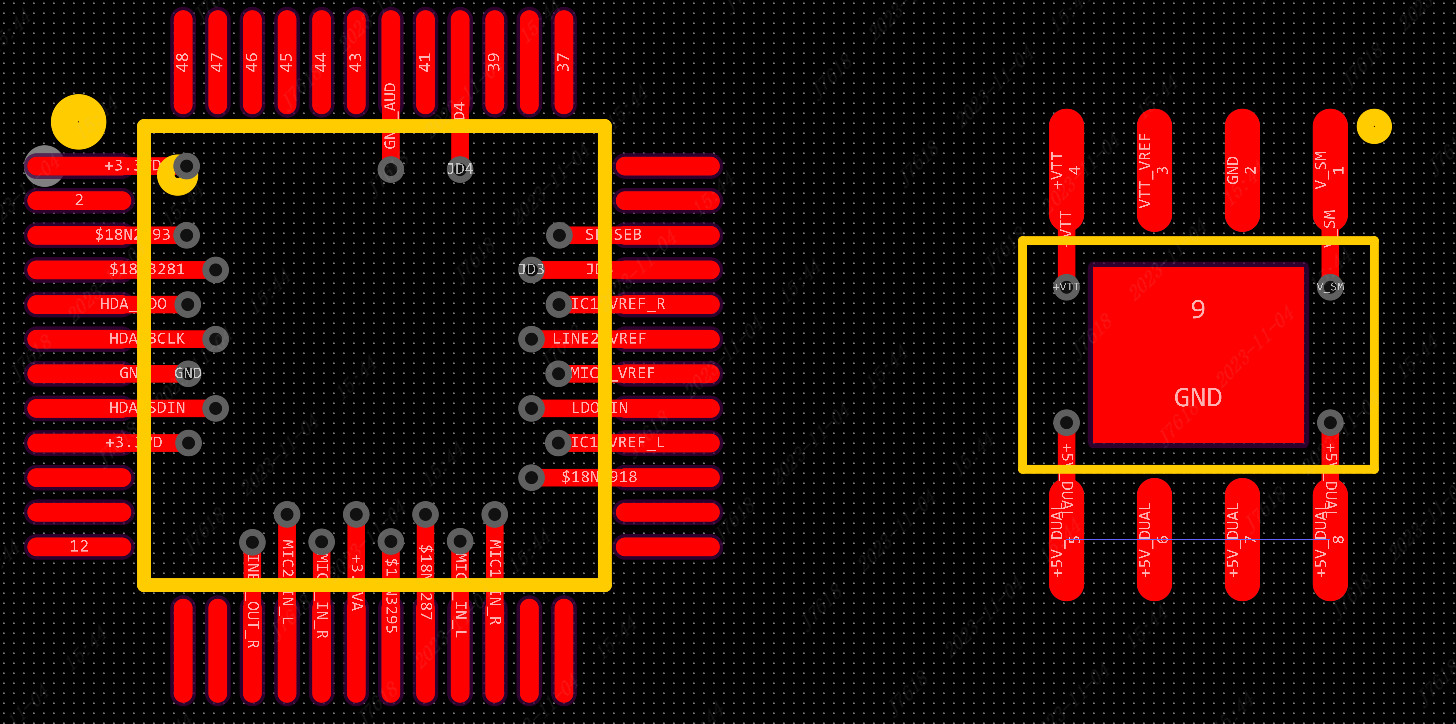
- **Out/In**: Like the packaging of the outward type, the direction of its fan is one inward in order.
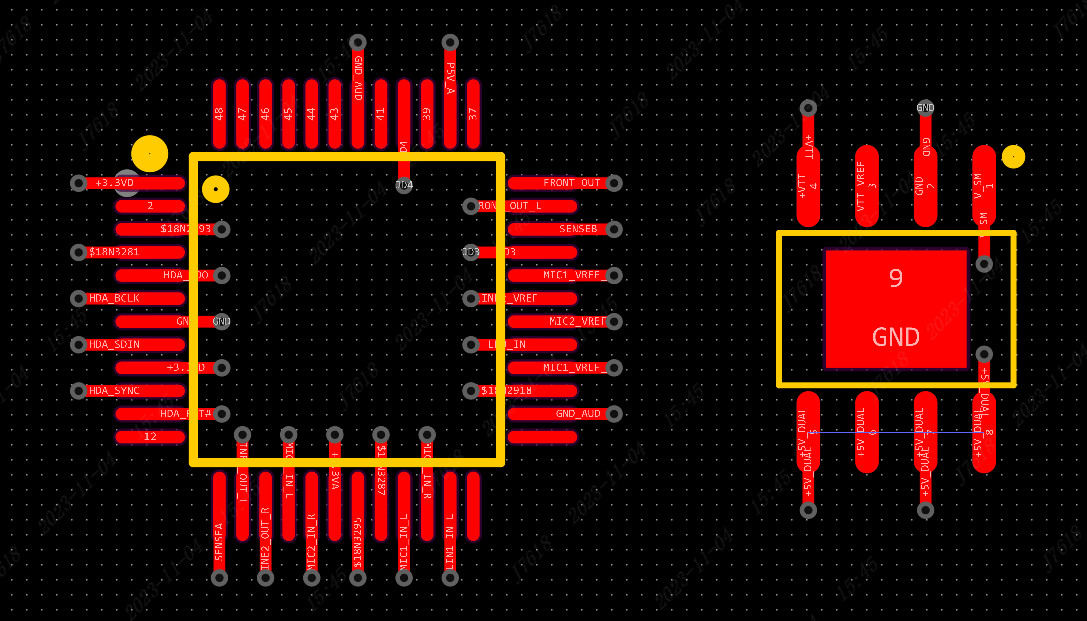
- **Fanout direction**: This option will appear when the type of fan is out is BGA. If the BGA packaging rotates 45 degrees, the direction of the fan can be modified to 90 °.

- **Via - Pad Spacing**
That is, the length of the fan out of the wire is set, and the pores here are the air gap distance.
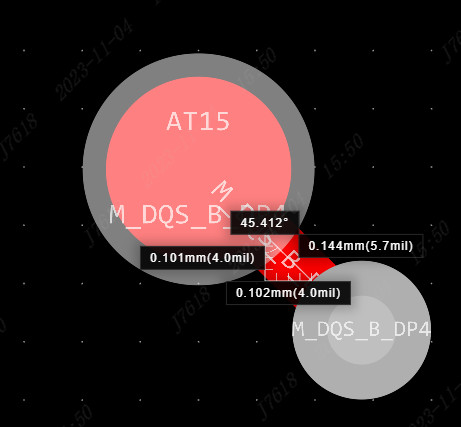
- Pad center: Except for outward, inward, outward, and inward types, other fan-out types can be set to the pile-pile spacing center as the pad.When the fan is made, the software will automatically detect the minimum gap of the adjacent pads, and the fixed fan is in the middle of the two pads.
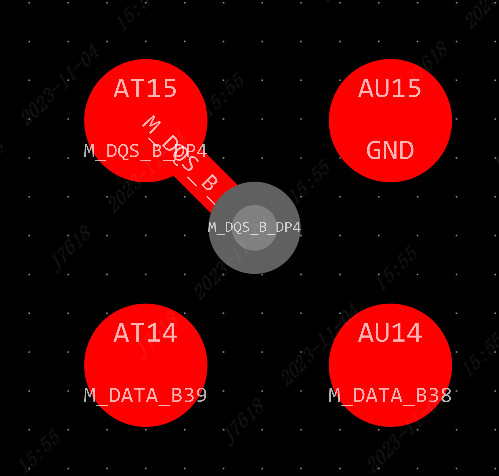
- Custom distance: Set a fixed fan length.
- Mini channel space: three types of fans, outward, inward, outward, and inward, this option will appear. Set up the pores of the two adjacent channels.The fan of the adjacent pad.
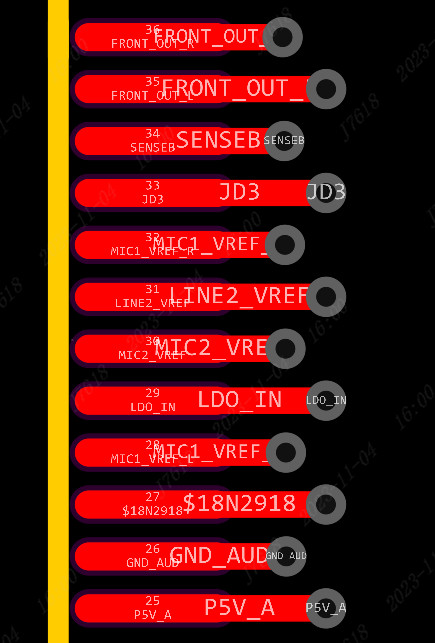
- **Include Unassigned Pins**: If this option is checked, the pads of the empty network will also be fanned.
- **Fanout Outer 2 Rows of Pads**: This option is only displayed when the fan is selected for BGA. If this option is checked, the two -line pads of the outermost line of BGA packaging will also be fanned, otherwise it will not be fanned.Essence
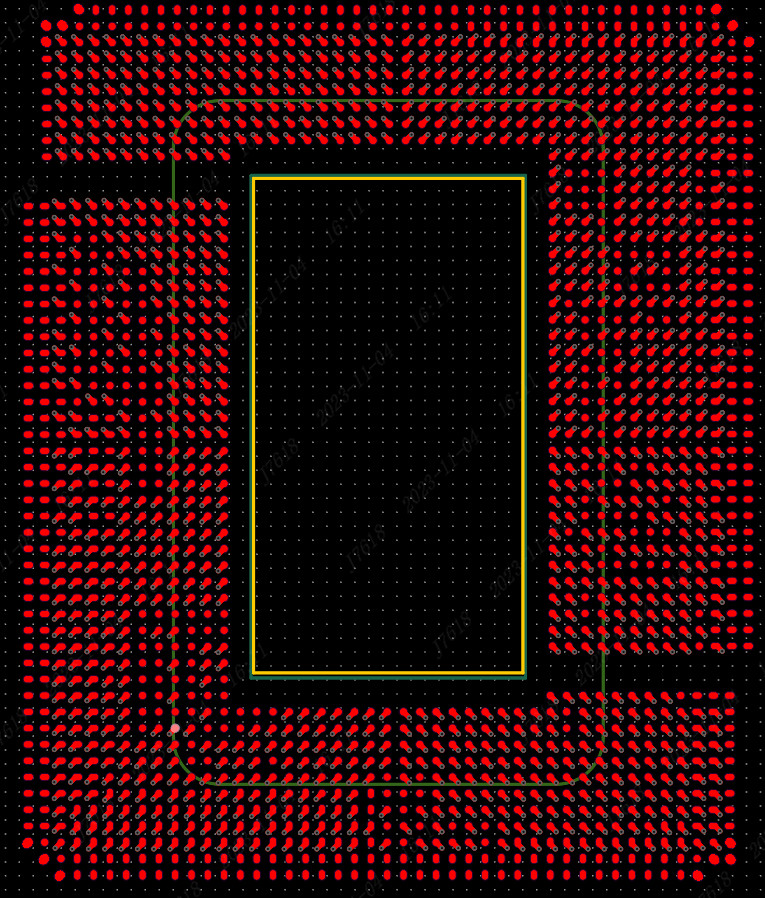
- **Ignore DRC When Fanning Out**: After checking all the pads of the pads will ignore the DRC to fan out. You can check the effect of the fan first. After adjusting the relevant parameters, then cancel the checked fan.Those fans and perforated fans that violate the DRC will be removed.
Track Via Property
Track Width: Divided into follow -up rules and customs, set to follow the rules, the software will be qualified according to the default wire width of the wire in the design rules.
Via: You can set the type of punching a punching hole or blindly buried holes. If the blind burial hole is set, the blind buried hole type needs to be set in advance in the design rules.
Via Size: Divided into follow -up rules and customs, and set to follow the rules. The software will punch the default hole size of the wire in the design rules.